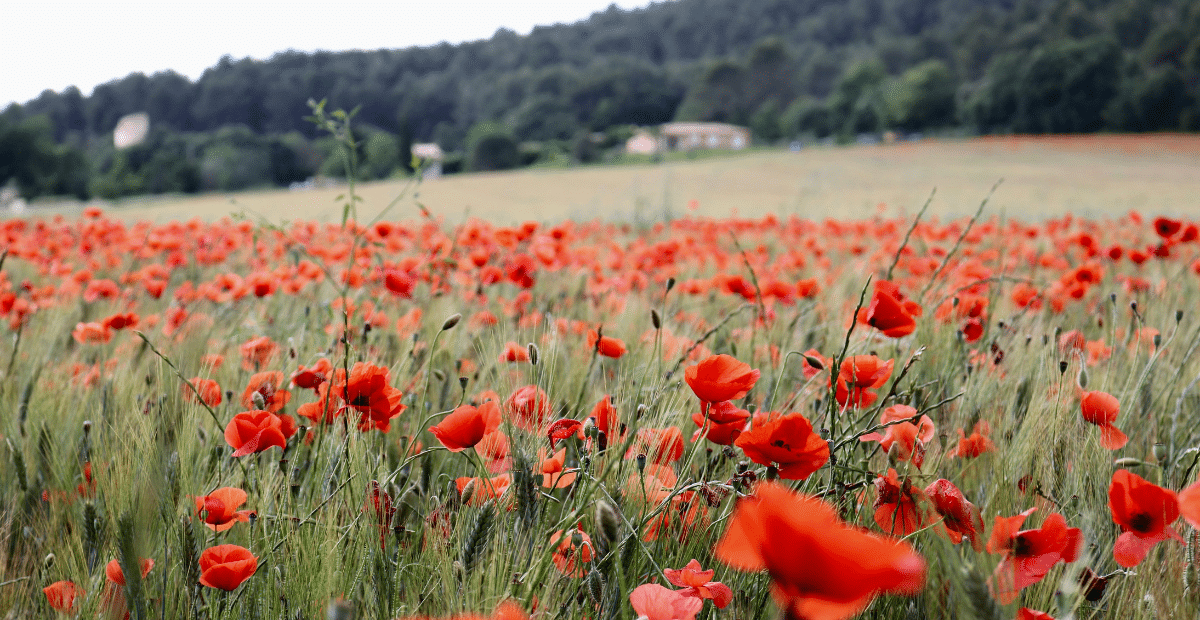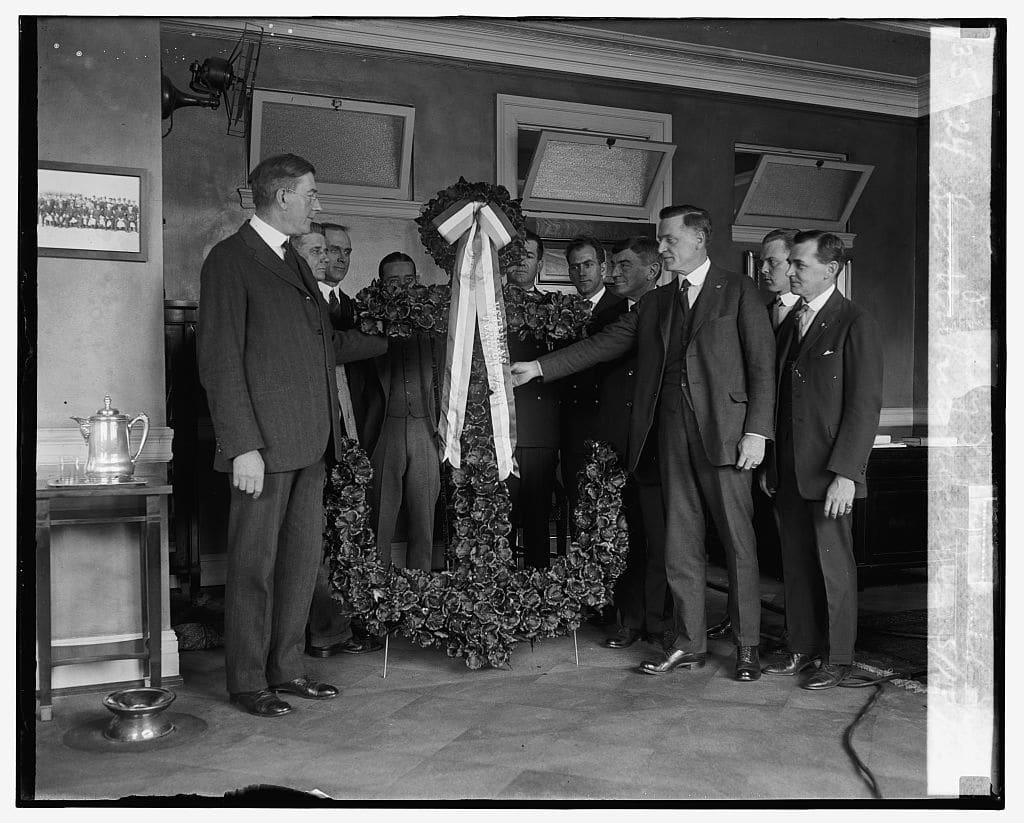Why Do We Wear Red Poppies On Memorial Day?
on May 25, 2024 • Updated May 23, 2025

Longstanding Tradition Has Poetic Roots In First World War
Once known simply as the Great War, a total of 116,708 American soldiers died in World War I.
Altogether, by some estimates, the Allied death toll was 6,433,692 over the course of the war, which raged from 1914 to 1918, with American involvement starting in 1917.
Amid all the bloodshed, a regional flower — the poppy — would grow and inspire a poem… and much more.
“In Flanders Fields”
Written by Canadian Lieutenant-Colonel John McCrae in 1915, the poem “In Flanders Fields” became a popular representation of the tenor of the war.
Many legends surround the writing of the poem, but it is largely believed to have been written in May of 1915 during the Second Battle of Ypres. Taking its name from the Belgian municipality Ypres is located within, called Flanders, the red poppy flowers are a common sight in the region.
Providing an account of McCrae’s writing of the famed poem, the Canadian Veterans Administration states on its website, “The day before he wrote his famous poem, one of McCrae’s closest friends was killed in the fighting and buried in a makeshift grave with a simple wooden cross. Wild poppies were already beginning to bloom between the crosses marking the many graves.”
McCrae’s poem — written with his late friend, Lieutenant Alexis Helmer, in mind — reads as follows:
“In Flanders Fields”
In Flanders fields the poppies blow
Between the crosses, row on row,
That mark our place; and in the sky
The larks, still bravely singing, fly
Scarce heard amid the guns below.
We are the Dead. Short days ago
We lived, felt dawn, saw sunset glow,
Loved and were loved, and now we lie,
In Flanders fields.
Take up our quarrel with the foe:
To you from failing hands we throw
The torch; be yours to hold it high.
If ye break faith with us who die
We shall not sleep, though poppies grow
In Flanders fields.
Wearing Poppies
By the war’s end in 1918, McCrae had already died, succumbing to illness only five days after being promoted to consulting physician of the First British Army. However, his poem would live beyond him, having already been translated into several languages, becoming one of the most famous works of poetry to come out of the war.
Like a flower being pollenated, McCrae’s poem would inspire another poem, and with it, a movement.
Moina Michael, a professor at University of Georgia, penned her poem in 1918:
“We Shall Keep the Faith”
Oh! You who sleep in Flanders Fields,
Sleep sweet — to rise anew!
We caught the torch you threw
And holding high, we keep the Faith
With All who died.
We cherish, too, the poppy red
That grows on fields where valor led;
It seems to signal to the skies
That blood of heroes never dies,
But lends a lustre to the red
Of the flower that blooms above the dead
In Flanders fields.
And now the Torch and Poppy Red
We wear in honor of our dead.
Fear not that ye have died for naught;
We’ll teach the lesson that ye wrought
In Flanders Fields.
Teaching a class of disabled veterans of the Great War, Michael observed firsthand the needs these veterans had, and she sought to do something to help them.
Creating and selling silk poppies, she knew she could raise funds to help support veterans like the students she had at UGA.
By 1921, the American Auxiliary Legion adopted the faux poppy as a symbol of remembrance for veterans of all wars, and local chapters of the American Auxiliary Legion still continue this tradition today, often favoring red paper over silk.
While red poppies are worn on Memorial Day in America, the Friday before Memorial Day is National Poppy Day, which gives special attention to those who died in World War I while also honoring all fallen heroes.
Red poppies are also worn on Armistice Day, the day fighting in World War I ended between the Allies and Germany, which is now observed in America on November 11 each year as Veterans Day.

Learn more about the Legion’s Poppy Program here: www.legion-aux.org/poppy.











